
Forex Meaning: Understanding the World’s Largest Financial Market for Beginners
Table of Contents
ToggleUnderstanding Forex: Navigating the World’s Largest Financial Market
Welcome to the fascinating world of foreign exchange, or forex. If you’re new to investing or seeking to deepen your understanding of how global currencies trade, you’ve come to the right place. The forex market is not just the largest financial market on the planet; it’s a dynamic ecosystem where trillions of dollars change hands daily, influencing everything from the price of imported goods to the profitability of multinational corporations. For ambitious traders like yourself, understanding forex means unlocking potential opportunities that are truly global in scope.
But what exactly is forex? At its core, it’s the process of converting one currency into another. However, in the context of trading, it refers to the decentralized global electronic marketplace where currencies are bought and sold around the clock. Unlike stock markets, which have physical locations like the New York Stock Exchange or the London Stock Exchange, forex operates entirely electronically (over-the-counter, or OTC). This global network connects banks, institutions, brokers, and traders worldwide, enabling seamless transactions across time zones.
Historically, accessing the forex market was largely the domain of major banks, large corporations, and governments. However, technological advancements, particularly the rise of the internet, have democratized this market, making it accessible to a wider range of participants, including individual retail traders like you. This shift has opened up unprecedented opportunities, but it also necessitates a solid understanding of the market’s structure, mechanics, and the powerful forces that drive currency prices.
In this exploration, we will break down the complexities of forex trading into digestible concepts. We’ll look at how currencies are paired, the fundamental units of measurement, and the key players who influence market movements. We’ll also delve deep into the critical role of economic data, central bank policies, and geopolitical events – factors that can cause significant volatility and present both substantial opportunities and risks. Think of us as your guide, helping you navigate this vast and exciting landscape with clarity and confidence.
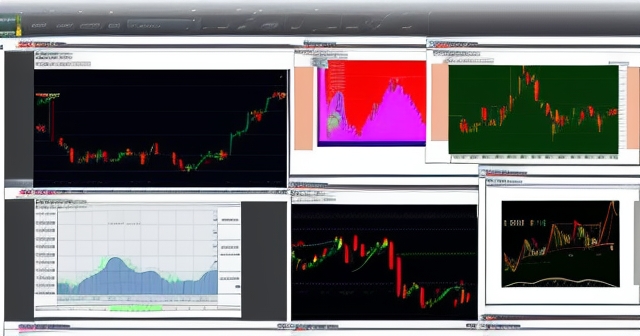
To truly appreciate the forex market, you must grasp its sheer scale. With daily trading volumes often exceeding $7 trillion (though figures can vary depending on calculation methodology, generally well over $5 trillion), it dwarfs all other financial markets. To put that into perspective, the global equity market’s daily trading volume is typically a fraction of this. This immense volume translates directly into exceptional liquidity. What does high liquidity mean for you? It means you can typically buy or sell currency pairs very quickly and efficiently, often with tight spreads between the buy and sell prices, especially for major currency pairs.
The decentralized nature of forex is another defining characteristic. There is no central exchange. Instead, trading occurs directly between participants via electronic networks. This OTC structure contributes to its 24-hour accessibility. How is this possible? The market operates across major financial centers in different time zones. When the market closes in one major hub, another is just opening. The primary trading sessions follow the sun, starting in Sydney, moving to Tokyo, then London, and finally New York. Because these sessions overlap, particularly the London and New York sessions (often considered the most active), traders can potentially participate at almost any time from Monday morning in Asia to Friday afternoon in New York.
This 24/5 operation provides significant flexibility for traders globally, allowing you to react to news and events as they happen, regardless of your local time zone. However, it also means the market is constantly moving, requiring vigilance and adaptability. Understanding the dynamics of different sessions – which pairs are most active, when volatility is highest – is a crucial part of developing your trading strategy.
The accessibility of forex for retail traders is primarily facilitated by online forex brokers. These brokers aggregate price feeds from large banks and provide trading platforms that allow individual traders to speculate on currency price movements. They offer various account types, often with leverage, which can amplify potential gains (and losses). Choosing a reliable and well-regulated broker is paramount for your trading journey.
If you’re considering beginning your forex trading journey or exploring a wide range of financial instruments, Moneta Markets is a platform worth considering. Hailing from Australia, they offer access to over 1000 financial products, catering to both novice and experienced traders.
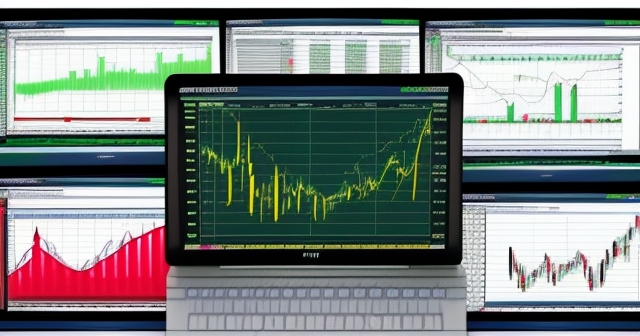
The forex market isn’t a monolithic entity populated by a single type of trader. It’s a complex ecosystem with a diverse range of participants, each with different motivations and trading volumes. Understanding who the major players are helps you grasp the market’s structure and the forces influencing price movements.
-
Major Banks (Tier 1): These are at the core of the forex market. Large international banks like Deutsche Bank, UBS, Barclays, and Citibank make up the interbank market, where they trade massive volumes directly with each other. They facilitate transactions for their clients, hedge their own currency exposure, and speculate on currency movements. Their transactions form the basis of the price feeds you see on trading platforms.
-
Central Banks: Institutions like the U.S. Federal Reserve (Fed), the European Central Bank (ECB), the Bank of Japan (BoJ), and the Reserve Bank of India (RBI) are powerful players. Their primary goal is not profit but managing their nation’s currency, maintaining price stability, and influencing monetary policy. They can intervene directly in the forex market by buying or selling large amounts of their currency to influence its value. Their interest rate decisions and policy statements are among the most significant drivers of currency movements.
-
Corporations: Large multinational corporations engage in forex trading primarily for hedging purposes. When a European company sells goods in the U.S., it receives USD but eventually needs to convert that revenue back to EUR. They use forex to lock in exchange rates and mitigate the risk of unfavorable currency fluctuations.
-
Investment Firms and Hedge Funds: These entities trade forex speculatively on behalf of their clients or funds. They employ sophisticated strategies, often involving large positions, based on fundamental analysis, technical analysis, and quantitative models. Their large trades can significantly impact market prices.
-
Governments and International Organizations: Governments sometimes engage in forex for various reasons, such as managing foreign reserves or facilitating international aid. International organizations like the International Monetary Fund (IMF) also participate in currency-related activities.
-
Retail Traders: This is where you fit in. Individual traders, often trading through online brokers, represent a growing segment of the market. While their individual transaction sizes are small compared to banks or institutions, their collective volume is substantial. Retail traders primarily speculate on currency price movements, aiming to profit from fluctuations.
Knowing these players exist helps you understand the market’s motivations. While retail traders react to price movements, those movements are often initiated by the large flows from institutions, driven by fundamental economic shifts or policy decisions from central banks and governments.
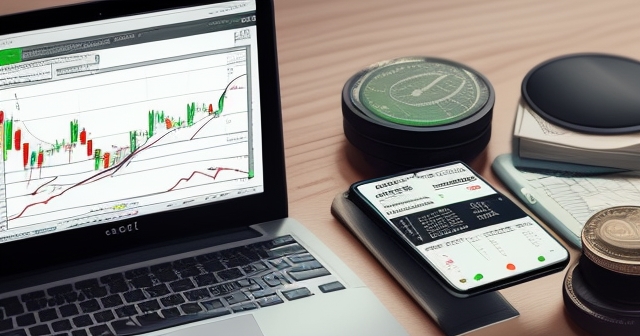
Unlike trading stocks, where you buy shares of a single company, forex trading always involves currency pairs. Why pairs? Because you are simultaneously buying one currency and selling another. For instance, when you trade EUR/USD, you are trading the Euro against the U.S. Dollar. The pair represents the exchange rate between the two currencies – how much of the second currency you need to get one unit of the first currency.
-
Base Currency and Quote Currency: In a pair like EUR/USD, the first currency listed (EUR) is the base currency, and the second currency (USD) is the quote currency. The exchange rate tells you how much of the quote currency equals one unit of the base currency. If the EUR/USD rate is 1.0850, it means 1 Euro is worth 1.0850 U.S. Dollars.
-
Major Currency Pairs: The most frequently traded pairs, known as the “majors,” involve the U.S. Dollar (USD) paired with other major world currencies. These include:
- EUR/USD (Euro/U.S. Dollar)
- USD/JPY (U.S. Dollar/Japanese Yen)
- GBP/USD (British Pound/U.S. Dollar)
- USD/CHF (U.S. Dollar/Swiss Franc)
- AUD/USD (Australian Dollar/U.S. Dollar)
- USD/CAD (U.S. Dollar/Canadian Dollar)
- NZD/USD (New Zealand Dollar/U.S. Dollar)
These pairs tend to have the highest liquidity and tightest spreads.
-
Cross Currency Pairs (Crosses): These are pairs that do not include the U.S. Dollar, such as EUR/GBP or AUD/CAD. They are also actively traded but generally have less volume and slightly wider spreads than the majors.
-
Exotic Pairs: These pairs combine a major currency with the currency of a smaller or emerging economy, like USD/TRY (Turkish Lira) or EUR/MXN (Mexican Peso). They typically have lower liquidity and wider spreads, and can be more volatile.
Now, let’s talk about how we measure price movements in forex. This is done using pips. A pip, or “percentage in point,” is the smallest price increment that a currency pair typically moves. For most currency pairs, a pip is the fourth decimal place (0.0001). So, if EUR/USD moves from 1.0850 to 1.0851, that’s a one-pip movement. For pairs involving the Japanese Yen (like USD/JPY), a pip is usually the second decimal place (0.01).
The value of a pip depends on the currency pair and the size of your trade. This brings us to lots. Forex trading is done in standardized units called lots. While you can trade virtually any amount, the standard sizes are:
-
Standard Lot: 100,000 units of the base currency
-
Mini Lot: 10,000 units of the base currency
-
Micro Lot: 1,000 units of the base currency
Trading in lots allows you to calculate the value of a pip for your specific trade size. For a standard lot of EUR/USD, a one-pip move is typically worth $10. For a mini lot, it’s $1, and for a micro lot, it’s $0.10. Understanding pips and lots is fundamental because they directly impact your potential profit or loss on any given trade.
In choosing a trading platform, the flexibility and technological capabilities are crucial. Moneta Markets offers support for popular platforms like MT4, MT5, and their proprietary Pro Trader, combining high-speed execution with competitive low spreads for a solid trading experience.
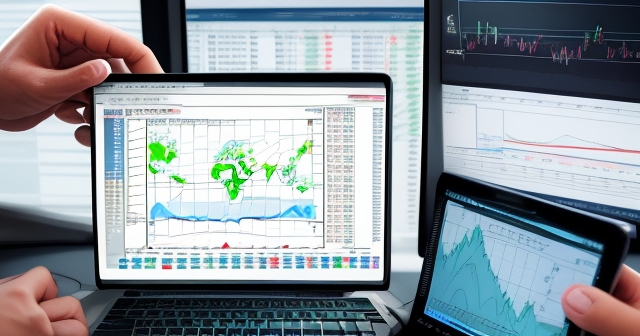
Forex trading is about speculating on the future direction of a currency pair’s exchange rate. When you open a trade, you are essentially taking a position on whether the base currency will appreciate or depreciate relative to the quote currency.
-
Going Long (Buying): If you believe the base currency will strengthen against the quote currency (meaning the exchange rate will rise), you *buy* the currency pair. For example, if you buy EUR/USD at 1.0850, you are betting that the Euro will strengthen against the U.S. Dollar. If the price rises to 1.0900 and you close your position, you make a profit (0.0050 movement, or 50 pips, multiplied by your lot size value).
-
Going Short (Selling): If you believe the base currency will weaken against the quote currency (meaning the exchange rate will fall), you *sell* the currency pair. Using EUR/USD again, if you sell at 1.0850, you are betting the Euro will weaken against the U.S. Dollar. If the price falls to 1.0800 and you close your position, you make a profit (0.0050 movement, or 50 pips, multiplied by your lot size value).
Profit or loss is determined by the difference between the price you open a position at and the price you close it at, measured in pips, and multiplied by the value per pip based on your lot size.
Most retail forex trading occurs in the spot market, meaning transactions are agreed upon immediately (“on the spot”) for future delivery. For most currency pairs, this settlement actually occurs two business days after the trade date (known as T+2). However, for retail traders holding positions overnight, brokers handle the daily rollover process. This involves either paying or receiving a small amount of interest, known as the rollover fee or swap, based on the interest rate differential between the two currencies in the pair. If you hold a currency with a higher interest rate than the currency you sold, you might earn interest; if it’s the other way around, you’ll likely pay interest. This can be a small factor but becomes more significant for positions held for extended periods.
Leverage is another characteristic of retail forex trading. Brokers allow you to control a large position with a relatively small amount of capital, known as margin. For example, with 1:100 leverage, you could control a $100,000 standard lot with just $1,000 of your own capital. Leverage can significantly amplify potential profits, but it also magnifies potential losses. It’s a powerful tool that demands careful risk management.
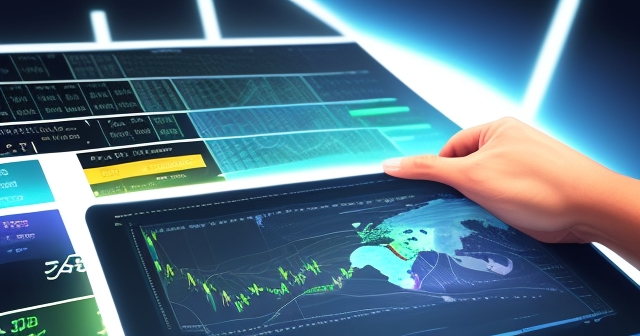
One of the most fundamental drivers of currency values is interest rates. Specifically, it’s the difference in interest rates between two countries that can make one currency more attractive than another. Central banks are the key players here, as they are responsible for setting benchmark interest rates and managing their nation’s monetary policy. Their decisions are watched intensely by forex traders worldwide.
Why do interest rates matter? Higher interest rates in a country make that country’s currency more attractive to foreign investors seeking higher returns on their deposits or fixed-income investments (like bonds). If the U.S. Federal Reserve raises interest rates while the European Central Bank keeps rates low, investors might move capital from Euro-denominated assets to USD-denominated assets to capture the higher yield. To do this, they must buy U.S. Dollars and sell Euros, increasing demand for USD and decreasing demand for EUR. This fundamental flow of capital can strengthen the USD and weaken the EUR, causing the EUR/USD pair to fall.
Conversely, lower interest rates can make a currency less attractive, leading investors to seek higher yields elsewhere. This is a significant factor behind the recent persistent weakness in the Japanese Yen (JPY). The Bank of Japan has maintained ultra-low, sometimes even negative, interest rates for years as part of its economic stimulus efforts, while other major central banks like the Fed, ECB, and Bank of England have raised rates to combat inflation. The wide interest rate differential makes holding JPY-denominated assets less appealing compared to assets in countries with higher rates, leading to sustained selling pressure on the Yen. This is why pairs like USD/JPY, EUR/JPY, GBP/JPY, and AUD/JPY have seen multi-decade highs.
Central bank policy decisions, including interest rate announcements, quantitative easing or tightening programs, and forward guidance on future policy intentions, are major catalysts for volatility in the forex market. Traders pore over statements from officials like Jerome Powell (Fed Chair) or the heads of other major central banks for clues about the future path of monetary policy. Even subtle changes in language can trigger significant market reactions. For example, discussions about potential ECB rate cuts in the future, or the Fed’s stance on “policy patience,” heavily influence market expectations and currency valuations.
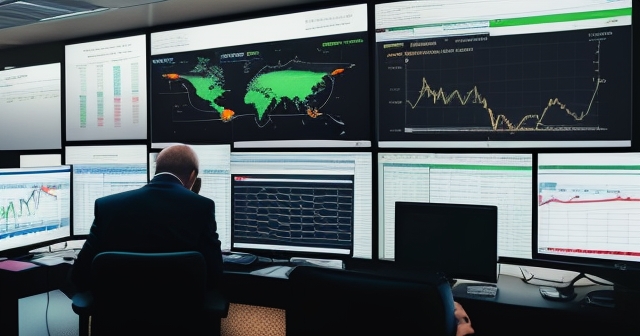
While interest rates are critical, they are just one piece of the complex puzzle driving currency values. The overall health and performance of a country’s economy are equally important, and this is revealed through a constant stream of economic data releases. These reports provide snapshots of various aspects of economic activity and are crucial for fundamental analysis in forex trading.
Think of economic data as vital signs for an economy. Strong vital signs (positive data) suggest the economy is healthy or improving, which can lead to expectations of higher interest rates (to prevent overheating) or simply make the country’s currency more attractive to investors. Weak vital signs (negative data) can signal economic trouble, potentially leading to expectations of lower interest rates (to stimulate growth) or making the currency less appealing.
Key economic indicators that forex traders monitor closely include:
-
Inflation Data (CPI, PPI): Measures the rate at which prices for goods and services are rising. High inflation often pressures central banks to raise interest rates, which can be bullish for the currency.
-
Gross Domestic Product (GDP): The total value of goods and services produced in a country. GDP growth is a primary measure of economic health. Strong GDP growth is generally positive for a currency.
-
Unemployment Data: Reports like the U.S. Non-Farm Payrolls (NFP) provide insights into the labor market. Low unemployment and strong job creation suggest a healthy economy and can be bullish for the currency. NFP is particularly known for causing significant volatility in USD pairs.
-
Retail Sales: Measures consumer spending, a key driver of economic activity. Strong retail sales data indicates robust consumer confidence and spending, positive for the economy and potentially the currency.
-
Trade Balance: The difference between a country’s exports and imports. A trade surplus (exports exceed imports) means there’s high demand for the country’s goods, and thus its currency to pay for them, which can strengthen the currency. A trade deficit (imports exceed exports) can weaken it.
-
Manufacturing and Services Surveys (e.g., PMI): These surveys gauge the health and sentiment of key economic sectors. Positive readings suggest expansion, which is generally currency-positive.
-
Consumer Confidence Surveys: Reflect how optimistic consumers are about the economy, which influences their spending habits.
The impact of these data releases is often tied to how they compare to market expectations. If a report is significantly better than economists predicted (“beats consensus”), it can cause a sharp move in the currency. If it’s worse, it can cause a sharp decline. Sometimes, the market’s *reaction* to the data is more important than the data itself, revealing underlying sentiment.
Moneta Markets is a globally accessible broker suitable if you are looking for a platform with regulatory oversight and extensive support. They hold licenses from bodies like FSCA, ASIC, and FSA, offer segregated client funds, free VPS services, and 24/7 customer support in multiple languages, including Chinese, making them a preferred choice for many traders worldwide.
While economic fundamentals provide a structural backdrop for currency values, the forex market is also heavily influenced by less predictable factors: geopolitical events and significant government policy decisions that fall outside of routine economic data releases. These events can introduce considerable uncertainty and trigger sharp, sometimes sudden, currency movements as traders react to changing global dynamics and potential risks.
Geopolitical events can range from political instability within a country (e.g., elections, coups) to international conflicts (like the Russia-Ukraine war), trade disputes, or major diplomatic developments. How do these impact currencies? They affect investor confidence and risk appetite. During times of global tension or uncertainty, investors often flock to “safe-haven” currencies, such as the U.S. Dollar (USD), Japanese Yen (JPY), or Swiss Franc (CHF), viewing them as less risky assets to hold. This increased demand strengthens these currencies, while currencies associated with the regions or countries involved in the conflict or instability may weaken.
For example, even prospects of peace talks related to the Russia-Ukraine conflict can influence currencies indirectly by changing risk sentiment or impacting commodity prices, which in turn affect the currencies of major commodity exporters or importers. Recent movements in currencies like the South African Rand (ZAR) have sometimes been linked to evolving geopolitical assessments and their potential impact on global trade and capital flows, sometimes amplified by commentary from figures like Donald Trump regarding potential tariffs on nations like BRICS members.
Major government policy decisions, beyond monetary policy set by central banks, can also have a profound impact. Examples include:
-
Fiscal Policy Changes: Significant shifts in government spending or taxation can affect a country’s economic outlook, debt levels, and attractiveness for investment, influencing its currency.
-
Trade Policies: The imposition of tariffs or participation in trade agreements can significantly alter a country’s trade balance, impacting the demand for its currency. Warnings of potential tariffs, like those sometimes voiced regarding trade with specific blocs, can create uncertainty and affect currency valuations.
-
Regulatory Changes: New regulations affecting financial markets or specific industries can influence capital flows.
-
Political Events: Election results or changes in political leadership can lead to uncertainty or shifts in economic policy direction, causing currency volatility.
These events are often difficult to predict and analyze definitively, adding a layer of complexity to forex trading. While scheduled economic data allows for preparation, geopolitical shocks can happen at any time, underscoring the importance of staying informed about global news and maintaining robust risk management practices.
Given the significant impact of economic data releases and news events on currency prices, many forex traders incorporate “news trading” into their strategy. This involves planning trades around scheduled high-impact news announcements, aiming to profit from the sharp price movements that often occur immediately following the release.
High-impact news events are typically listed on an economic calendar, which shows the date, time, currency affected, the name of the report (e.g., Consumer Price Index, Non-Farm Payrolls), the previous period’s value, the market’s consensus forecast, and the relative expected impact (often color-coded, like red for high impact). Key reports like interest rate decisions from major central banks, inflation figures, GDP growth, and employment data (especially NFP) are perennial market movers.
Why does news cause volatility? When a significant economic report is released, traders and algorithmic systems analyze the actual number compared to the forecast. If the actual number is significantly different from what the market expected, it forces a rapid reassessment of the economic outlook and potential future monetary policy. This triggers a wave of buying or selling pressure as traders adjust their positions, leading to rapid price swings.
Trading the news can be challenging and requires swift decision-making and robust risk control. Prices can move very quickly, spreads can widen dramatically, and unexpected reversals are common. Some strategies involve trading the *breakout* – waiting for the initial volatile reaction to push the price beyond a certain level and then entering a trade in the direction of the breakout. Others might try to fade the initial move if they believe it’s an overreaction, or trade options to profit from increased volatility regardless of direction.
Regardless of the specific approach, successful news trading is less about predicting the number itself (though forecasting helps) and more about understanding the *potential market reaction* to different outcomes and having a plan to execute trades and manage risk under conditions of extreme volatility. The impact of major news can also extend beyond the initial minutes, influencing market sentiment and price direction for hours or even days afterward, as seen with the lingering effects of major central bank announcements or significant geopolitical shifts.
The 24-hour nature of the forex market is facilitated by its global structure, with major financial centers opening and closing throughout the day. Understanding these sessions and their overlaps is key to knowing when volatility and trading volume are typically highest for specific currency pairs.
The major trading sessions are:
-
Sydney Session (Asia-Pacific Open): Often considered the start of the forex trading day (Sunday evening GMT/EST). Trading volume is relatively lower during this session.
-
Tokyo Session (Asian Session): Follows Sydney, running through typical Asian business hours. The JPY pairs (like USD/JPY, EUR/JPY) are most active during this time. This session can be influenced by economic data from Japan, China, Australia, and New Zealand.
-
London Session (European Session): Begins as the Asian session is winding down. London is a major global financial hub, and this session sees a significant increase in volume and volatility across many pairs, especially those involving the GBP, EUR, and CHF. Many major European economic data releases occur during this time.
-
New York Session (North American Session): Opens while the London session is still active. This overlap between London and New York is typically the most active and volatile period of the trading day, as both major financial centers are fully engaged. USD pairs are highly active, and major U.S. and Canadian economic data releases occur during this session (e.g., NFP, CPI, Fed announcements).
The periods when sessions overlap are particularly important. The London/New York overlap, which lasts for several hours, usually sees the highest trading volume and volatility. This is because major banks, institutions, and traders in both regions are actively participating, and many major economic data releases from the U.S. and Europe occur during this window. Trading during these overlaps can offer greater opportunities for significant price movements, but also comes with higher risk due to increased volatility.
Conversely, trading during slower periods, like the late U.S. session or the Sydney session, might see less volatility but also lower liquidity, potentially leading to wider spreads and slower order execution, especially for less popular pairs. Understanding which pairs are most active during which sessions, and when key economic data from specific regions is scheduled, helps you plan your trading day effectively and focus your attention on the periods that best suit your strategy.
The forex market, with its immense liquidity, 24/5 accessibility, and potential for leverage, offers significant trading opportunities. However, it’s crucial to approach it with a clear understanding of the inherent risks and a disciplined approach to managing them.
One of the biggest attractions, and potential pitfalls, for retail traders is leverage. As discussed, leverage allows you to control a much larger position size than your initial capital would normally permit. This means a small move in the market can result in a proportionally larger profit on your capital. But, crucially, the reverse is also true: a small adverse move can lead to significant losses, potentially exceeding your initial deposit. This is why leverage must always be used with extreme caution and robust risk management.
Volatility is another key characteristic. While volatility presents opportunities for profit through price movements, it also increases the risk of rapid losses if the market moves against your position. Economic data releases, central bank announcements, and unexpected geopolitical events are major drivers of volatility. Traders must be prepared for sudden price swings and have strategies in place to handle them.
Effective forex trading requires a combination of analysis and risk management. There are broadly two main approaches to analyzing the market:
-
Fundamental Analysis: Focuses on the economic, social, and political factors that can affect currency supply and demand. This involves studying economic data releases, central bank policies, government statements, and geopolitical events to assess the underlying strength or weakness of an economy and its currency.
-
Technical Analysis: Involves studying price charts and using statistical indicators to identify patterns, trends, and potential entry and exit points. Technical analysts believe that historical price action can provide clues about future movements.
Many successful traders use a combination of both approaches. Fundamental analysis helps identify potential long-term trends driven by economic shifts, while technical analysis can help with precise timing of entry and exit points.
Crucially, no amount of analysis guarantees success without proper risk management. This is perhaps the most important aspect of trading. Key risk management techniques include:
-
Using Stop-Loss Orders: These are automated orders placed with your broker to close a losing position once it reaches a certain price level, limiting your potential downside on any single trade.
-
Determining Position Size: Carefully calculate the size of your trades (in lots) based on your account size and risk tolerance. Avoid risking too large a percentage of your capital on any single trade.
-
Maintaining a Favorable Risk/Reward Ratio: Ensure that the potential profit (reward) on a trade is significantly larger than the potential loss (risk). A common guideline is to seek a risk/reward ratio of 1:2 or more.
-
Avoiding Over-Leveraging: While leverage is available, using too much can quickly lead to margin calls and account liquidation. Be conservative with leverage, especially as a beginner.
-
Having a Trading Plan: Define your strategy, entry/exit rules, risk management rules, and stick to them. Avoid making impulsive decisions based on emotions.
The forex market is constantly evolving, influenced by the latest economic data, central bank commentary, and geopolitical developments, as we see with current themes like USD/JPY’s rise or discussions around central bank policy trajectories. Staying informed and adaptable is essential.
The foreign exchange market is a truly global and incredibly dynamic environment. As we’ve explored, it’s much more than just currency conversion; it’s a complex interplay of massive financial institutions, central bank policies, government actions, economic health indicators, and the collective sentiment of millions of participants worldwide.
Understanding the fundamental mechanics – how currencies are paired, the significance of pips and lots, and the mechanics of going long and short – provides the essential foundation for trading. Building upon this, recognizing the powerful drivers of currency value, particularly interest rates set by central banks and the constant flow of economic data, allows you to develop a more nuanced view of potential price movements.
Furthermore, appreciating the impact of broader forces like geopolitical events and non-monetary government policies highlights the need to stay informed about global news and understand how uncertainty can ripple through financial markets. The structured volatility around scheduled news releases also offers specific trading opportunities, albeit ones that require careful execution and significant attention to risk.
For any trader looking to navigate the forex market, whether you are just starting or aiming for deeper technical understanding, a commitment to continuous learning is paramount. The market is ever-changing, and the ability to analyze, adapt, and, most importantly, manage risk effectively is what separates consistent traders from those who struggle.
By approaching forex trading with a blend of fundamental knowledge, technical insight, disciplined risk management, and a healthy respect for the market’s volatility, you position yourself to potentially capitalize on the vast opportunities this unique global market offers. The journey may be challenging at times, but with the right foundation and approach, the world of forex trading can be an incredibly rewarding endeavor.
| Currency Pair | Type | Description |
|---|---|---|
| EUR/USD | Major | Euro against U.S. Dollar |
| USD/JPY | Major | U.S. Dollar against Japanese Yen |
| GBP/USD | Major | British Pound against U.S. Dollar |
forex meaningFAQ
Q:What is forex trading?
A:Forex trading involves buying and selling currency pairs in the foreign exchange market to profit from fluctuations in exchange rates.
Q:How does leverage work in forex trading?
A:Leverage allows traders to control larger positions with a smaller amount of capital; however, it can amplify both potential profits and losses.
Q:What factors influence currency values?
A:Currency values are influenced by interest rates, economic data releases, geopolitical events, and market sentiment.
發佈留言
很抱歉,必須登入網站才能發佈留言。